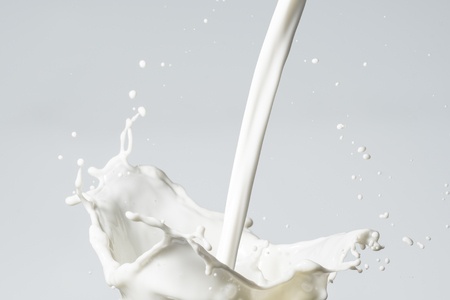
Casein, often called micellar casein is the protein components in milk curds and is naturally the main protein in cheese. It is a popular protein supplement and complements those other milk derived proteins found in whey. The main difference from the nutritional perspective between the two types is that casein is much more slowly digested and absorbed by the body whereas whey proteins have a faster absorption.
Casein
Bovine milk has an average protein content of 35 mg/ml. This protein is made up of two clear fractions, casein, which we are interested in here and serum milk proteins, the whey proteins. They make up 80% and 20% of the total protein respectively.
Casein is mainly 4 related types of protein. It is mixed complex of phosphoproteins found in all mammalian milk as a colloidal dispersion of micelles of between 50 and 600 nm in diameter.
The main types of casein include the following:-
- Alpha-Casein: Alpha-casein is the most abundant form of casein and accounts for about 30-35% of the total protein content in cow’s milk. It plays a significant role in the formation of the micellar structure of milk, which helps to keep other components such as calcium and phosphorus dispersed.
- Beta-Casein: Beta-casein makes up about 10-15% of the total protein in cow’s milk. It is an important source of essential amino acids, particularly in infant nutrition. Beta-casein also has genetic variants, such as A1 and A2 beta-casein, which have gained attention due to potential differences in digestion and health effects, though research on this topic is ongoing. It has excellent food functional properties including foaming and emulsification. It is used for generating peptides with anti-hypertensive activity.
- Kappa-Casein: Kappa-casein is a smaller component of milk protein, making up about 8-12% of the total protein content in cow’s milk. It plays a crucial role in the stabilization of the casein micelle structure, contributing to the viscosity and texture of dairy products like milk and cheese.
- Gamma-Casein: Gamma-casein is a minor component of milk protein, representing around 1-5% of the total protein content. It is involved in the stabilization of the casein micelles and may also have immunological functions.
A1 and A2 Protein Milk
We’ve already mentioned that A1 and A2 beta-casein proteins are identical save that histadine is at amino acid position 67 in A1 and is replaced with proline in A2. The A1 version is more prevalent in the USA than in Europe and accounts for various differences in nutritional performance. It is worth noting that there is no concrete evidence that states A1 casein is more nutritionally damaging than A2. One critical difference is that beta-casomorphin-7 is hydrolysed as a 7 amino-acid peptide from A1-casein but this cannot occur with A2 casein. The A1 beta-casein type is most commonly found in European and USA cattle herds. The A2 variant is found in cattle herds in France.
The types of herds that produce various types of milk include Guernsey cows. Seventy percent of Guernsey cows produce the A2 casein. The Holsteins and Ayrshires produce between 46 and 70% of milk containing both A1 and A2 proteins.
These types of casein proteins interact with calcium and other minerals to form micelles, which are spherical structures that help keep the proteins dispersed in milk and contribute to its unique properties such as opacity and stability. The composition and properties of casein can vary slightly depending on factors such as the source of the milk (e.g., cow, goat, sheep) and genetic variations.
The assembly of casein micelles proceeds by two distinct routes – hydrophobic interactions between groups on different molecules, and of calcium phosphate nanoclusters that act as a neutralizing bridge between two negatively charged phosphoseryl clusters. Very small amounts of calcium phosphate along with serum ionic calcium plays plays a significant role in micellar structure.
Casein Nutrition
Milk is consumed at bedtime because casein helps us sleep. The slow digestion of protein coupled with the release of melatonin like peptides is shown to help with sending us off to sleep. It’s the basis behind many of the claims made for malted drinks like Horlicks or Milo for example.
Body building dietary supplements often contain a mix of blended proteins including whey and casein because they extend the digestion period and the release of peptides and amino-acids for absorption. Casein is ideal for providing nutrition when the body is resting or recovering or where targeted muscle building is required. Some established sport protein supplements rely on a balanced blend to achieve a strong absorption level: consider JYM Supplement Science’s PRO JYM blend as a good example.
Micellar casein refers to the physical structure of casein in solution. Casein is not readily soluble in water and is usually a suspension in milk. This level of insolubility increases when it is combined with acidic liquids, such as stomach acid. This is the property that results in its slow absorption because it forms a gel that is gradually digested over a 7-8 hour period.



Leave a Reply